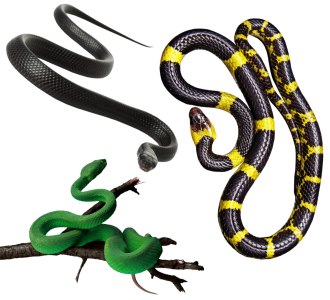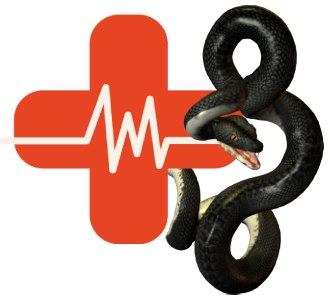
Thailand is well known for its wide variety of wildlife, especially with regard to reptiles. Many different types of snakes, including those found in deep jungles and coastal regions, can be found all over the country. However, when compared to other nations, Thailand does not have the greatest diversity of snake species. More species can be found in India and Indonesia than in Thailand; India is home to over 230 species, while Indonesia is home to an astounding 295+ species.
Dangerous vs. Harmless Snakes
The possible risk presented by snakes is one of the main worries shared by both visitors and residents. About 15% of the snake species that are known to exist in Thailand are thought to be dangerous or capable of inflicting bites that are significant to health. This statistic is consistent with worldwide estimates that state 15% of snake species are regarded as hazardous.
Common Venomous Snakes in Thailand
The most notable dangerous snakes in Thailand include:

- Monocled Cobra (Naja kaouthia)
- Malayan Pit Viper (Calloselasma rhodostoma)
- Banded Krait (Bungarus fasciatus)
- Malayan Krait (Bungarus candidus)
- Green Pit Viper (Trimeresurus albolabris)
- These species are responsible for the majority of serious snakebites in the country, particularly affecting agricultural workers who frequently encounter them.
Snakebite Incidents and Dry Bites
In Thailand, snakebite incidence is rather high, especially in rural and agricultural regions. As they frequently come into touch with poisonous snakes like pit vipers, cobras, and kraits, farmers and agricultural workers are the group most vulnerable to snakebites. Though they happen often, not every bite envenoms the victim.
Dry Bites
When a poisonous snake bites without injecting much venom—or sometimes none at all—it is known as a “dry bite.” Dry bites can occur in any snake species and at any time; estimates range from 30% to 80%. This implies that there is a good (30–80%) chance that a bite from a dangerous snake will not cause serious injury.
Mortality Rates and Medical Treatment

Varying reports and data-collecting techniques make it difficult to determine the precise number of snakebite-related deaths in Thailand. Depending on the source, estimates range in yearly deaths from 5 to 500. Because antivenom and medical care are readily available, the real figure is probably closer to the lower end of this range.
Key Facts About Snakebite Treatment
Public hospitals in Thailand must possess antivenom for the most toxic snakes in their community.
Typically, a specific antivenom can be obtained from another location within 24 hours, even if it is not immediately available.
Even for the most venomous species, such as kraits and monocled cobras, the survival rate for snakebite victims is nearly 100% when prompt medical care is provided.
King Cobra Encounters
The King Cobra (Ophiophagus hannah) is a snake that is feared worldwide due to its size and potent venom. King Cobra sightings in Thailand are exceedingly uncommon despite their notorious reputation. Every year, a significant number of snake enthusiasts travel to Thailand with the sole purpose of observing King Cobras; however, only a small number of them are successful. King cobras are notoriously difficult to locate; consequently, they are seldom observed by individuals who are actively seeking them.
King Cobra Bite Survival
From documented cases and personal accounts, the survival rate for King Cobra bites is high with timely medical intervention. Among the few known cases:
❌4 deaths
✅ 5 survivors following treatment
Given the rarity of encounters and the high survival rate with proper medical care, the risk posed by King Cobras to the average traveler is minimal.
Safety Precautions for Travelers
To minimize the risk of snake encounters and bites while traveling in Thailand, it’s crucial to follow some basic safety precautions:
Wear protective clothing
When hiking or exploring areas where snakes may be present, wear long pants and closed-toe shoes.
Be cautious in rural areas
Agricultural areas are common habitats for venomous snakes. Stay vigilant and avoid tall grass, piles of leaves, or rocks where snakes may hide.
Use a flashlight at night
Many snakes are nocturnal. Using a flashlight when walking outdoors at night can help you spot and avoid snakes.
Avoid handling snakes
Do not attempt to handle or provoke any snake, venomous or not. Admire them from a safe distance.
Seek immediate medical attention if bitten
If a snake bites you, seek medical help immediately. Time is critical in ensuring effective treatment and recovery.
Conclusion
Thailand has amazing attractions, from vibrant cities to tranquil countryside. While the country is home to a diverse range of snake species, the average tourist has a low chance of encountering a dangerous one. You can significantly reduce your chances of being bitten by a snake while also having a safe and enjoyable vacation by learning about common snake species and taking the necessary precautions. Respect wildlife, and if you are bitten, seek immediate medical attention for the best outcome.